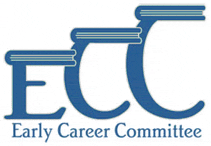Meet the Department takes a closer look at the more enigmatic departments within a publishing house. In this edition, get the insiders’ guide to Little, Brown Books for Young Readers’ Managing Editorial department!
What does managing editorial do?
Managing editorial shepherds each title through the production phase of the publishing process. There’s a lot of little things we do that depends on the nature of each project, but here is the gist of it. On the administrative side, we create and maintain schedules from when a book is ready to be copy edited to its release to the printer. On the creative side, we review the manuscript when it’s been copy edited, or the proofs when they have been proofread. We also review jacket/cover mechanicals. It’s our job to catch typos and other inconsistencies in every project.
What is the difference between copy editing and proofreading?
Copy editing happens at the manuscript stage. The book is still in a word processing format, so whatever the text looks like at this point will be pretty different from how it looks laid out in real-book form, or in proof pages. Also at the manuscript stage, the text is tagged for styles that the typesetter needs to be aware of in the book (i.e. italics, extracts, letters, numbered lists). Once the manuscript is copy edited, the clean text is sent to a typesetter or compositor to be laid out in InDesign. After the text is laid out, what you and the author will be seeing is known as the “proof pages.”
Does the managing editorial department get to copy edit books all day?
It depends on the publishing house—some houses have a copy editing staff, while other houses have a production editor. Production editors typically send out full-length novels for copy editing and proofreading to outside freelancers. Children’s publishing is a special case though, because the books we work on are sometimes short, like picture books and leveled readers. We can copy edit those in-house.
What is the difference between the work you do for picture books and novels?
There’s not a big difference text-wise, though for picture books we will want to preserve the author’s voice and style, since they’ve usually been heavily edited and crafted before the manuscript enters the copy editing stage. We also get to copy edit the art, if you can call it that. We might see sketches of the art to compare against the text to make sure it all matches up. The same can be said for something like an illustrated middle grade novel. If there is any art involved, we will have to check the art against the text. For example, we want to make sure a character isn’t wearing a striped shirt in the art, instead of wearing a polka-dotted shirt per the text. It’s the little things that count!
What is the hardest thing about working in managing editorial?
There are two things that come to mind. One is that you have to be a perfectionist, and have a real knack for spelling and grammar. If you are still new in your career, it’s understandable that you might not have every section of Chicago Manual of Style, 16th Edition–the preferred style manual for book publishing—memorized. However, it’s still frustrating when something is overlooked or a typo goes uncaught (but we are human and it happens…and we all just need to shake it off!). The other thing is when a schedule is completely derailed, through no fault of your own or anyone else. Life happens and sometimes schedules are thrown off track. It’s our job to make sure we roll with the punches and put the best books out there, even when things get crazy.
What’s the best thing about working in managing editorial?
We get to put our touch on a project and help shape it into the final product it becomes. I love seeing the books when they come in—in all their 3-D glory! We do spend up to a year seeing these books flat on a page, you know. I also have a great appreciation and respect for authors who thank their copy editors in their acknowledgments. It’s a nice boost of confidence to see an author pleased with our work!
How many spaces do I put after a period or other ending punctuation mark?
One, please. Despite everything you learned in grade school, there should just be one space between sentences.







